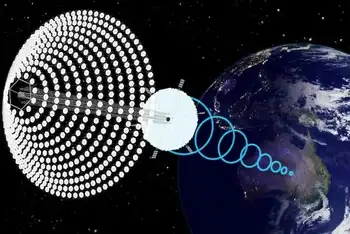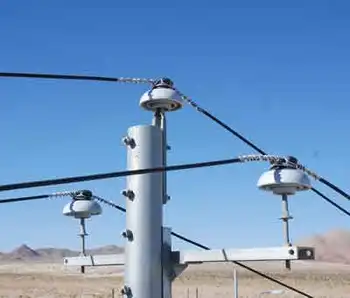How do you product clean energy from dirty coal?
By Globe and Mail
Arc Flash Training CSA Z462 - Electrical Safety Essentials
Our customized live online or in‑person group training can be delivered to your staff at your location.

- Live Online
- 6 hours Instructor-led
- Group Training Available
In the other ad, directed by the famed Coen brothers, a smarmy pitchman offers a family a "clean-coal" room deodorizer, which leaves them coughing in a smog-filled home. "In reality, there's no such thing as clean coal," reads the tagline at the end.
Two powerful lobbies are spending millions to influence public perception and so shape the future of America's energy and environmental policies. The winner will resolve one of the principal contradictions of Barack Obama's agenda.
The President wants to wean the United States from its reliance on imported oil. He also wants to reduce America's greenhouse-gas emissions. The two don't square.
Coal-fired generation plants produce half the electricity Americans use. And "there is not a credible economic forecast that does not expect coal use to grow," believes Joe Lucas, communications vice-president for America's Power, which produced the pro-coal ad.
But burning coal generates huge amounts of carbon dioxide, contributing to global warming.
"Coal is by far the most polluting fossil fuel we have available to us," says Jennifer Filiault, a representative of an environmental coalition called CLEAN. "It endangers our country and our world.... It places future generations in jeopardy."
The answer, coal advocates maintain, is to reduce carbon-dioxide emissions from coal-fired plants. The most promising future technology is called carbon capture and storage (CCS), also called sequestration, in which as much as 90 per cent of carbon dioxide gases generated by a coal-fired plant are captured and piped deep into the Earth, where they remain trapped.
That is exactly the technology that could be used to mitigate the release of carbon dioxide caused by the extraction process in Canada's oil sands.
The problem with that theory is that no energy company has built a plant using CCS technology because of the tremendous expense, though there are demonstration projects under way in Europe.
Whether the United States gets its first clean-coal power plant is currently in the hands of Congress. The Bush administration first promoted and then, in 2007, axed a proposed plant, known as FutureGen, after a site-selection team turned down two locations in Texas, Mr. Bush's home state, and approved a site in Illinois, which is thick with Democrats.
The Bush administration maintained the plant was cancelled because its cost had nearly doubled, to $1.8-billion. But a General Accounting Office report said the claim was exaggerated.
Congress and the administration are undecided whether to devote some of the stimulus-package money to kick-start FutureGen.
"There are many, many good things about it," Energy Secretary Steven Chu said recently. "We want to go forward in some modified way on that." Even so, he warns that he, too, is wary of the project's costs.
Mr. Lucas believes that commercially viable clean-coal technology could be available "within 10 to 15 years," according to a philosophy "of slow, stop, reverse," in which emissions are gradually reduced.
Canada and the United States should work co-operatively, Mr. Lucas urged, to develop technology that could be used both in coal-fired plants and Alberta's oil sands.
Bruce Nilles, director of the Sierra Club's National Coal Campaign, suspects that estimates claiming CCS would double the cost of coal-generated electricity are correct.
"If other things are cheaper, like wind and solar, let's not rely on coal when we have a smarter option," he urges.
Instead, Ms. Filiault believes, the United States should "set a good example for the world," by conserving energy, modernizing the power grid and expanding use of alternative energy sources.
That would, of course, reduce demand for oil-sands oil, to the detriment of Alberta's and Canada's economy.
Mr. Obama has often argued that clean coal is one of many paths to an energy-independent, environmentally sustainable future.
"This is America; we figured out how to put a man on the moon in 10 years," he said during the election campaign. "You tell me we can't find a way to burn coal that we mine right here in the United States of America and make it work." Pro-coal forces regularly feature that clip in ads.
The President stresses that all domestically produced sources of energy should be encouraged, including wind, solar, nuclear and biofuels. Yet for now, at least, the paradox remains. If America is to contribute to the struggle to reduce global warming, then it must greatly reduce its reliance on dirty coal. But if it is to wean itself from its addiction to foreign oil, then it must turn to domestic sources.
And for the foreseeable future, dirty coal will be part of the mix.











